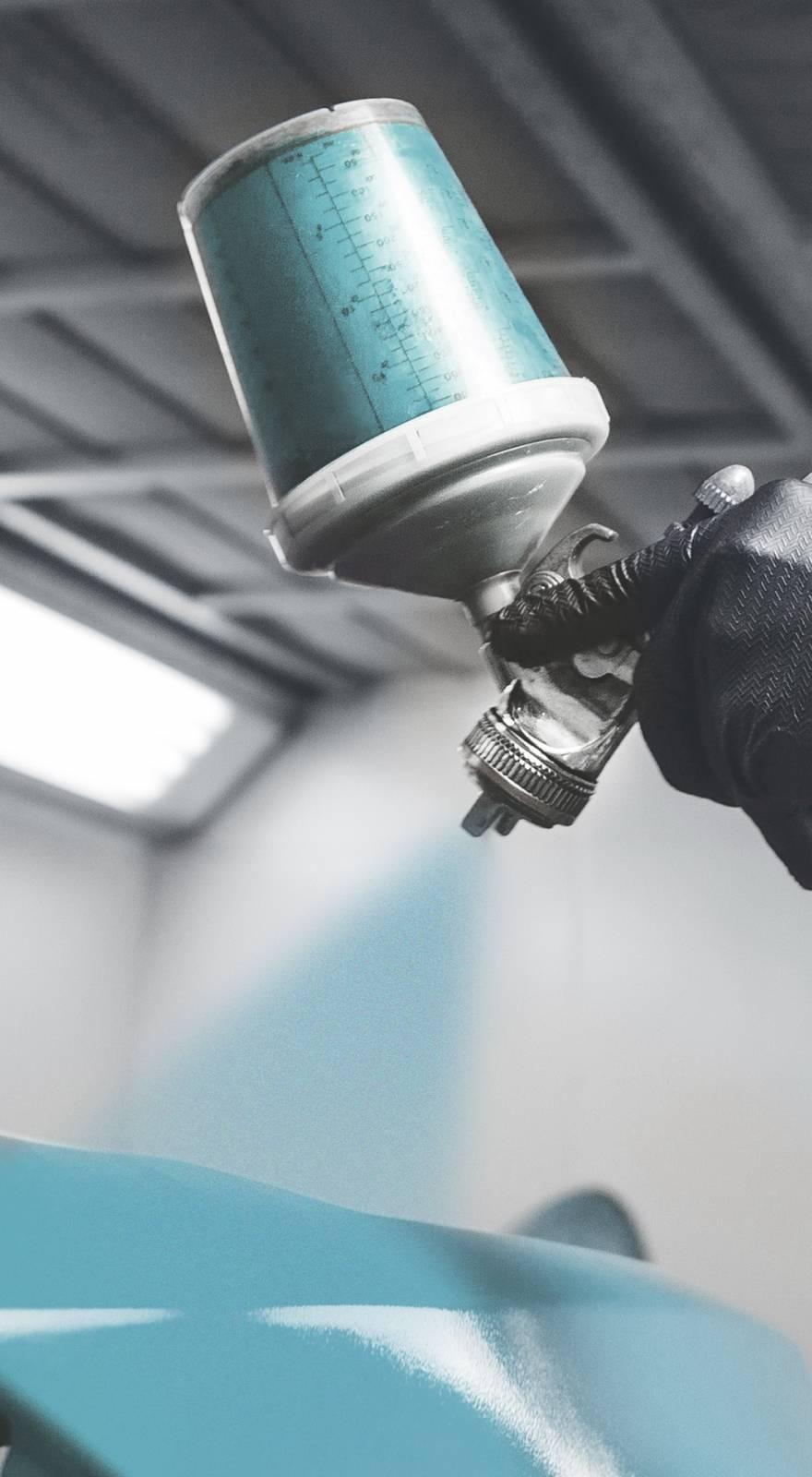Knowde Enhanced TDS
Identification & Functionality
- Product Type
- Technologies
- Product Families
Features & Benefits
- Labeling Claims
- Ready-to-Use Product Features
- Advantages
- Low slump, trowel-grade consistency.
- High abrasion resistance.
- Excellent freeze/thaw & de-icing salt resistance.
- Ideal trowel-applied mortar for horizontal surfaces.
- Suitable for use in cast-in-place repair methods.
- Two component – high polymer-to-cement ratio.
- High compressive, flexural and tensile strengths.
- Tenacious adhesion to prepared substrates.
- Extendable with coarse aggregate for repairs > 3/4”.
- Zero VOC - contributes to LEED credits.
- Meets USDA and FDA compliance standards.
Applications & Uses
- Markets
- Application Area
- Application Method
- Compatible Substrates & Surfaces
- Usage
- Concrete repairs on grade, above and below grade.
- Horizontal, vertical and overhead surfaces.
- Interior and exterior service conditions.
- Structural repair applications.
- Resurfacing and overlayment for concrete.
- To level, pitch or slope irregular concrete surfaces.
- Installation Steps
- Surface Preparation – All surfaces must be clean, sound, and free from bond inhibiting substances including, but not limited to, grease, oil and any other contaminants or loosely bonded materials. Follow ICRI Technical Guideline #310.2-1997 for detailed surface preparation requirements. A minimum surface profile of a CSP-4 or higher is required depending on overall substrate conditions and concrete repair requirements. Concrete and other porous or absorptive substrates must be (SSD) saturated surface dry with no standing water at the time of application.
- Mixing MiraPatch RM1 mortar – MiraPatch RM1 must be mixed mechanically to a uniform consistency in a clean mixing vessel using a low-speed drill (300-450 rpm) with a “Jiffy-type” or similar Miracote-approved mixing paddle. Pre-mix RM1 Liquid first to bring any settlement of polymer solids back into suspension. Pour approximately 2 ½ quarts of RM1 Liquid into the mixing vessel. When mixing always add the powder component gradually to the liquid component. Thoroughly mix the complete unit for a minimum of two minutes. For desired consistency, add up to an additional ½ pint of RM1 Liquid and continue mixing one more minute or until a uniform homogeneous consistency is achieved.
- Mixing MiraPatch RM1 concrete – Coarse aggregates must be clean, well-graded, non-reactive, high in density and low in water absorption. Coarse aggregate must be (SSD) saturated surface dry when incorporating into the MiraPatch RM1 mortar mix. Each unit of MiraPatch RM1 may be extended with 20 to 30 pounds maximum of ¼” or 3/8” aggregate depending on applied thickness. Follow the same instructions as detailed for mixing MiraPatch RM1 mortar. After the initial two minutes of mixing, slowly add the desired quantity of measured aggregate to the MiraPatch RM1 mortar and continue mixing for one more minute. Up to one additional pint of RM1 Liquid may be added while mixing to achieve the desired uniform consistency.
- Application & Finish – As with all trowel-grade repair mortars, MiraPatch RM1 must be applied to a saturated surface dry (SSD) substrate with no standing water. To ensure intimate contact with the concrete substrate, apply a scrub coat to fill all pores and voids and place repair mortar immediately while scrub coat is still wet. Trowel the mortar against the perimeter of the repair and work the material toward the center. To complete the repair, finish surface with appropriate trowel or float as required depending on desired surface texture. Do not re-temper the material when it is no longer workable.
- For Best Results
- Always install a minimum 4’ by 4’ test area or job site mock up for owner approval of acceptable color, texture, finish adhesion and any other critical requirements prior to proceeding with the installation.
- Verify that the most current versions of product technical data sheets (PTDS), color charts, material safety data sheets (MSDS), and installation guidelines (IG) are being utilized for project submittals and application reference.
- Protect materials at all times from excessive heat and cold, and pre-condition material as required in adverse conditions.
- As per ACI recommendations for Portland cement concrete, curing is required in order to meet published physical properties. Moist curing with burlap/polyethylene or burlene is the preferred method. A compatible waterbased curing compound is also acceptable, but may require removal prior to the application of subsequent coatings or other materials.
- The proper application of this product is the sole responsibility of the end user. Job site visits by Miracote representatives are only for the purpose of making recommendations. Supervision and quality control are the sole responsibility of the user.
- Measure surface and ambient temperatures to ensure that material is only applied when temperatures are 45° F (7° C) and rising during placement and time of application.
Properties
- Typical Physical Properties
| Value | Units | Test Method / Conditions | |
| Compressive Strength | 4140.0 | psi | ASTM C109 |
| Tensile Strength | 800.0 | psi | ASTM C307 |
| Flexural Strength | 1200.0 | psi | ASTM C580 |
| Hardness (Shore D) | 70-75 | — | ASTM D2240 |
| Adhesion (100% Failure in concrete) | min. 400 | psi | ASTM D4541 |
| Indention Para (Steadily applied load, 2,000 lbs. On 1” steel ram imposed for 30 min.) | 2.26 | % | MIL-D-3134 |
| Adhesion (Shear from steel plate after 96 hours) | 305.0 | psi | MIL-D-3134 |
| Water Absorption | 3.14 | % | MIL-D-3134 |
| Impact Resistance | max. 0.01 | inch | Gardner Impact Tester |
| Initial Set | 1.0 | hour | ASTM C266 |
| Final Set | 4.0 | hours | ASTM C266 |
Regulatory & Compliance
- Certifications & Compliance
Technical Details & Test Data
- Coverage Rates
Theoretical coverage rate per 50 lb. bag:
MiraPatch RM1
@ 25 lb. Aggregate Extension
38.5 sq. ft. @ 1/8” 9.3 sq. ft. @ 3/4”
19.2 sq. ft. @ 1/4” 7.9 sq. ft. @ 7/8”
9.6 sq. ft. @ 1/2” 7.0 sq. ft. @ 1” 4.8 sq. ft. @ 1” 4.6 sq. ft. @ 1.5”
Actual consumption rates are dependent on many factors including, but not limited to, substrate texture and porosity, variations in applied thickness and normal allowance for waste.
- Mix Ratio
(2/3) Gallon Liquid to (1) 50 lb. bag of powder.
- Limitations
- Concrete surface repair dimensions including overall length, width, depth and shape need careful consideration, and should be in conformance with ACI recommended standards of practice.
- Mechanical surface preparation methods may require additional testing to verify substrate tensile strength in accordance with ICRI Guideline No. 210.3R-2013 (Guide for Using In-Situ Tensile Pull-off Tests to Evaluate Bond of Concrete Surface Materials).
- Extension with coarse aggregates may alter the physical properties of MiraPatch RM 1 as published.
- Do not use solvent based curing compounds.
- As with all cement based materials, avoid direct contact with aluminum to prevent an adverse chemical reaction. Refer to MiraPrime AL for an appropriate primer.
Packaging & Availability
- Packaging Type
- Packaging & Colours
- RM1 Liquid (1 Gal. Can, 4/case - 5 Gal. Pail)
- RM1 Powder (50-pound bag) - Available in gray and white.
Storage & Handling
- Shelf Life & Storage
One year from the date of manufacture as long as packaging remains unopened and material is stored in a protected environment free from moisture, excessive heat, freezing temperatures, and direct sunlight.

